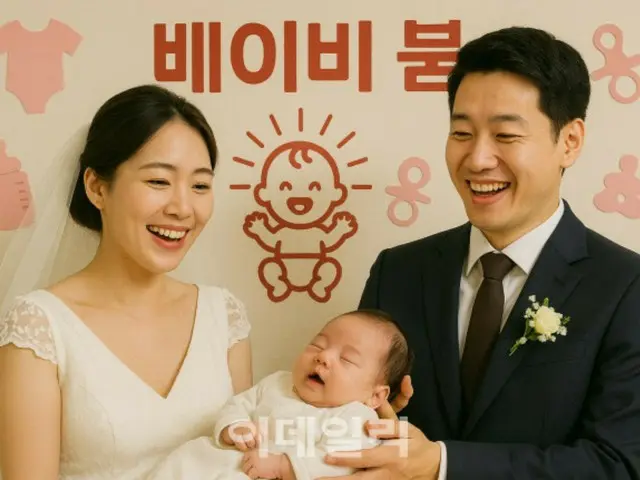The reasons for this include the increase in the population of children aged 4 and under and a positive change in perception of the needs of children.
According to the "March 2025 Population Trends" released by the Korea National Statistical Office on the 28th,
The total fertility rate for the first quarter was 0.82. This is the highest since the first quarter of 2022 (0.87). For the month of March alone, it was 0.77, an increase of 0.04 from the same month last year.
The total fertility rate fell from 1.05 in 2017 to 0.98 in 2018, and has remained at the zero level ever since. However, it is expected to drop to 0.78 in 2022.
It was on a downward trend to 0.72 in 2023, but rebounded slightly to 0.75 last year and then rose significantly to 0.82 in the first quarter of this year.
The increase in the birth rate is due to an increase in marriages delayed by the COVID-19 pandemic, an increase in the female population in their early 30s, and
"The number of marriages will increase from the second half of 2023, and the demographic structure will see an increase in women in their early 30s, as well as changes in attitudes toward marriage and childbirth," a Statistics Korea official said.
"This is probably because people's perceptions of marriage, childbirth, child-rearing, and the government's measures to combat the declining birthrate have changed in a more positive way," he said.
According to the results of the "2018 National Survey of 2,650 Japanese people aged 25-49 years old nationwide," the percentage of people with a positive view of marriage was 72.9% in the May survey, following 70.9% in March last year and 72.9% in September.
The number of people who answered that "children are necessary" also increased significantly from 61.1% in March of last year to 70.9% in the latest survey.
Looking at the age groups of women who gave birth in the first quarter, birth rates increased in all age groups except those under 24. Women aged 25-29 increased their birth rates from the previous year.
Compared to the same quarter of the year, the number of cases increased by 0.7 people from 21.5 to 22.2, while the number of cases in the 30-34 age group was 76.5, and the number of cases in the 35-39 age group was 52.7, up 4.2 and 6.5 people, respectively.
The birth rate by sex also increased by 0.3 to 4.5. The birth rate by age of the mother increased by 0.7 to 29 years old and 4.2 to 30 to 34 years old compared to the same period last year.
Looking at the ratio, 61.8% were first-borns and 31.7% were second-borns, up 0.4 and 0.1 percentage points, respectively, from the same period last year. Most families are tending to have only one or two children.
The number of marriages, a leading indicator of childbirth, is also on the rise. There were 58,704 marriages in the first quarter of this year, up 8.4 percent (4,554 marriages) from the same period last year. In March, there were 19,181
The number of new marriages increased by 11.5% (1,983 cases) from the same month last year. The total fertility rate is usually highest at the beginning of the year and tends to decrease toward the end of the year, but the number of marriages delayed due to the COVID-19 pandemic has increased in recent years.
"The number of marriages that were postponed due to COVID-19 has increased by two-thirds," said Lee Sang-rim, a senior researcher at the Population Policy Research Center at Seoul National University.
"This trend is expected to continue slowly until the end of the year, and the total fertility rate is expected to recover to 0.8 this year," he said.
"It is," he said.
2025/05/29 09:42 KST
Copyrights(C) Edaily wowkorea.jp 88

